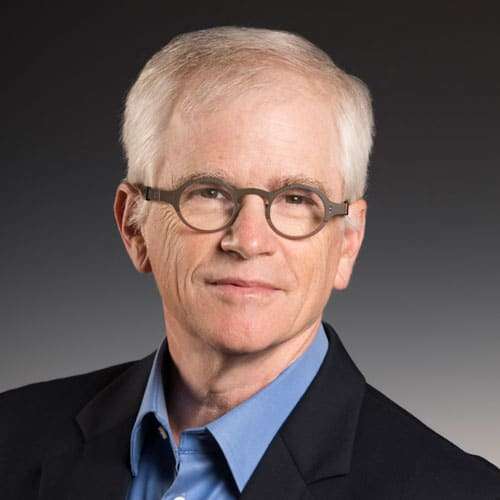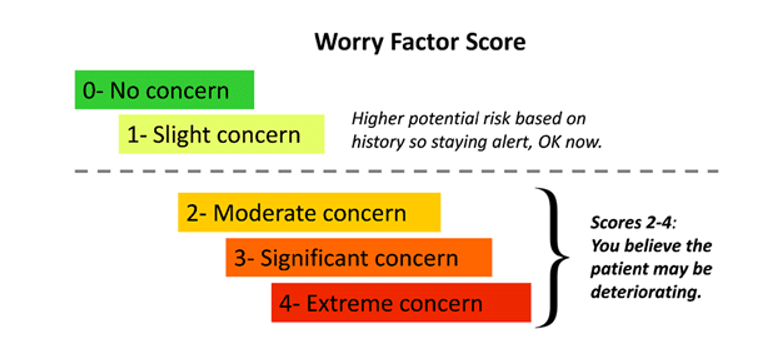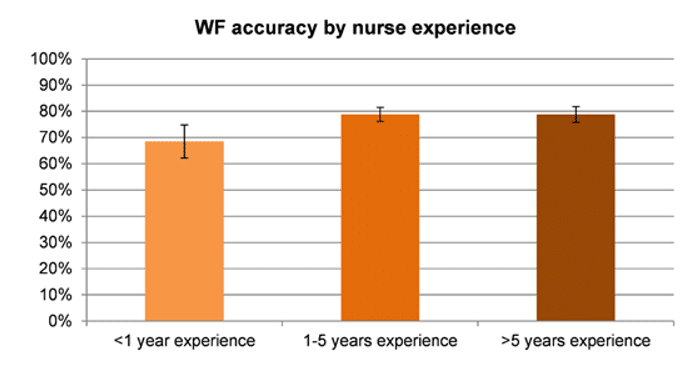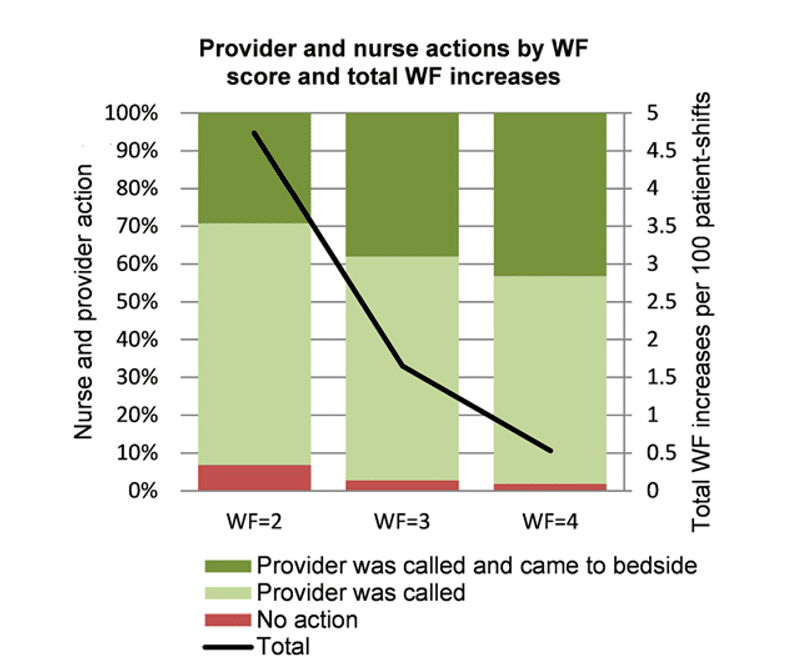– Jeff Segal, MD, JD
Welcome everyone. Thank you and good evening, good morning, good afternoon. I have no idea what time it is when you’re listening to this, but I’m joined today by both a friend and a colleague, and I’m really excited to have him with us. His name is Joseph Stern – I call him Jodi. By way of background, he is a fellow neurosurgeon. He’s also a friend and a neighbor – and in fact, he’s operated on me.
He’s on speed dial for my wife. For those of you who may not know, I have a son with significant special needs. He’s got epilepsy, as well as autism. On occasion, the epilepsy causes him to fall. And if I’m out of town, the first call that comes out of my house doesn’t go to me. It goes to Dr. Stern.
Let me jump into his bio. He’s a neurosurgeon and partner in the largest neurosurgical practice in the country – and we’ll spend a little bit of time talking about his work there. He also has a very personal experience related to healthcare and the healthcare system. And it’s put him on a different – or actually a parallel trajectory – and we’ll spend a fair amount of time digging into that as well. He’s an author, having published in multiple locations including the New York Times. And he’s also an inventor. With that, let me welcome Dr. Stern. Thanks for being here today.
– Joseph Stern, MD, FACS
My pleasure, Jeff.
– Jeff Segal, MD, JD
I opened with the idea that you’re a neurosurgeon – and there aren’t that many neurosurgeons. You’re the first neurosurgeon that I’ve spoken to on this podcast. Although, I know many. Tell me how it is you became a neurosurgeon. Most people don’t start off wanting to be a neurosurgeon – it is something that we meander into as our skills develop. But tell me about your trajectory.
– Joseph Stern, MD, FACS
I went to the University of Michigan Medical School and I rotated through surgery late in my training and my anticipation was that I wouldn’t really like surgery. I thought it was going to be brutal and not very humane and not very interesting. I went to medical school thinking I’d become either be a pediatrician or a psychiatrist. And believe it or not, I was blown away by orthopedic surgery – which is about as far away from those other areas as you could be. I actually started in orthopedics. And then I was sitting in a lecture hall with a fellow resident. We were both interns. His name is Alan Gross. He’s right now running for U.S. Senate for the state of Alaska. So, he’s taken an interesting course.
But he and I were sitting and talking, and he said, “I want to go back to Alaska, and I really can’t do it as a neurosurgeon. I’d rather be an orthopedic surgeon.” And I said, “I really think the brain is fascinating.” I told him I’d be interested in being a neurosurgeon. So, we switched residencies.
– Jeff Segal, MD, JD
Well, hang on – was the implication that there were no brains in Alaska? Or am I missing something?
– Joseph Stern, MD, FACS
Too much call coverage.
– Jeff Segal, MD, JD
Ah, too much call. I got it.
– Joseph Stern, MD, FACS
Too much call, too many subdurals at night. No control over your lifestyle.
– Jeff Segal, MD, JD
Well, it is true. Trauma is a nocturnal illness. Something we will dive into in just a little bit. So, you switched residences with Alan. I assume that you just walked up to the chairman and said that you each had a different request. How did that play out? I can’t imagine doing that in my program.
– Joseph Stern, MD, FACS
It was a little unusual. And I kind of hesitated because I was adding time. It was going to be a longer training program. And so my wife was like, “Are you crazy? Why are you doing that?”
And I remember what one of the orthopedic attendings said to me as I announced that I was going to make that switch. She looked at me and said: “Well, at least you’re not becoming a “flea”.” And that was the end of it.
– Jeff Segal, MD, JD
One of the things that I find interesting: Every specialty seems to have its own personality mix. I think the line of thought behind surgery in general is that it attracts Type-A, detail-oriented individuals. But these people may not communicate well with patients. They may be gruff. There are exceptions to that rule, obviously. There are certainly those who are fabulous communicators and those who spend a lot of time wanting to connect and talk to patients and keep them as their patients for life.
What do you think? What do you think the personality paradigm is in neurosurgery? That’s my first question. And then number two: Do you think that the field attracts a particular personality type? Or do you think the field makes a particular personality type? None of the above, or both?
– Joseph Stern, MD, FACS
I think it’s a very interesting question. First of all, I was very fortunate to have trained at the University of Michigan where Dr. Buz Hoff was the chairman – and he was a mensch. He was a really kind man, he was a great teacher. Residents loved him. It was a very humane program. I’ve heard stories of abusive, difficult, stressful programs. Fortunately, while it was a lot of work, my training program was not that way. It was actually very humane and very humanistic. One of the reasons I made the switch from orthopedics to neurosurgery was I found a lot of the orthopedists were constantly focusing on the joint and not the person.
And I wanted to be more involved with the entire person. I felt that was available to me through the training in neurosurgery. And really, many of my co-residents were fascinating people with diverse interests. One of my co-residents was Sanjay Gupta, who is now on CNN. I was surrounded by worldly and interesting people. I felt it was a good fit.
– Jeff Segal, MD, JD
I can definitely validate that Dr. Buz Hoff was a mensch. The name is, first of all, very interesting. If you say quickly, it sounds like “buzz off.” But I spent a summer up in Michigan as a student – I was a third-year student in a neurosurgery elective – and I can corroborate exactly what you said. Our chairman, Bob Grossman, was same way. A great man. Very interested in the patient. Perhaps the bum rap that many neurosurgeons get isn’t well deserved – or maybe it is, and we just ended up in great programs.
– Joseph Stern, MD, FACS
I think we ended up great programs. I also think that there is a big variety of personalities that are drawn to neurosurgery. You and I both know neurosurgeons who are very technical – not very humane, not very interested in people. And so, it tends to attract a variety of personality types.
– Jeff Segal, MD, JD
One of the people that I trained with was technically adept – in fact, a surgeon’s surgeon, if there ever was one. He was a master to look at, and he was interested in patients, but he wasn’t a talker. He didn’t want to spend a lot of time speaking with each individual patient unless they were particularly interesting. And I still remember one of his comments to me: “Look, if you want a friend, get a dog. If you want a great surgeon, I’m your guy.”
And the truth is, that probably was who he was – that was his personality. And maybe the better thing for him to do would be to hire an assistant who could be that communicator. This person could translate the doctor’s speech for the patient.
Everybody would be on the same page.
– Joseph Stern, MD, FACS
It sounds like this individual would have benefitted from an extender. When I was training, those really didn’t exist. Dr. Hoff said to me one time of a very famous neurosurgeon: “I’d let him operate on my brain – but I’d never have him over for dinner.”
– Jeff Segal, MD, JD
So, therefore, the best neurosurgeons are the ones you would let operate on your brain and have over for dinner.
– Joseph Stern, MD, FACS
I think so. But I have this running debate with one of my partners who says, “Why are you trying to inject humanity into the field of neurosurgery? It’s really all about technical proficiency, expertise, and being the best surgeon possible.”
And actually, as I’ve gone through my career, I feel that’s less and less the case. When I started, it was all about “perfection.” And the ideal was that you had to do absolutely everything flawlessly. Surgery was a technical exercise. And I realized through my own experiences that in doing so, we’re leaving many important drivers out of the equation – which are the relationships with the patients and an understanding of what the patient needs. What I’ve come to realize is that patients very often want to be accepted and appreciated and acknowledged as human beings.
It’s the neurosurgeon who becomes occupied with perfection. And perfection is often not the patient’s expectation – nor is it the family’s expectation. What they want is a human connection. They want communication. They want respect. They want acknowledgement. They’re really not fixated on perfection. Perfection is a noble pursuit, but it is an unachievable standard.
It’s not possible to do anything “perfectly.” You know, Jeff, I’ve never done a surgery – not even yours – that I regard as perfect. Perfection is not an attainable goal. And I think connecting with your patient and accompanying them through an illness is far more important. The surgery itself is critical, but it is one of many parts of a patient’s treatment. I think that the surgery is one part – but it’s not the whole part.
– Jeff Segal, MD, JD
They’re not mutually exclusive. The goal – to be technically adept – to be the best possible technician – is certainly a reasonable goal. But it shouldn’t be at the expense of human connection. Because connecting with the patient is critical. Otherwise, you will not understand his success criteria. For example, let’s say you have a patient with a brain tumor. How do you take care of that patient? You can’t take care of that patient in a vacuum. That patient may have particular goals. It may be longevity, or it may be making it to a graduation or a wedding.
Those are two very different approaches. And those are different surgical approaches. Meaning that one patient that shows up at the door with a diagnosis may have two different ideas of what they would consider success. How can you do your job unless you at least have a modicum of understanding of the patient’s own success criteria?
– Joseph Stern, MD, FACS
One of the things that I think is very challenging about being a neurosurgeon is that you need to flex through a lot of contrasting emotional states.
– Jeff Segal, MD, JD
And what do you mean by that?
– Joseph Stern, MD, FACS
You must connect with a patient and be willing to share a powerful experience with him or her. You may find yourself crying with a patient who is about to die. Or you may need to deliver terrible news. But to make yourself impermeable, to wall yourself off, is to make yourself inaccessible. It affects your ability to communicate. And yet, you still have to go into the operating room and be daring. You need to become a risk-taker, to a certain extent.
A willingness to block out some of the emotional connection with that patient, to the point that you can cut their head open and operate on them, and dig deep inside someone’s brain and remove tumors – that requires a certain amount of emotional distance. It’s a challenging job, moving between those emotional states.
– Jeff Segal, MD, JD
Part of it means understanding the risk tolerance for every patient. And every patient is different. An 18 year old is going to have a different risk profile than someone who’s 85. None of that can be understood without having a conversation with the patient or potentially their family. I can’t imagine – and I say this with the benefit of hindsight – I can’t imagine a “one size fits all” risk profile for every patient that walks in the door. I think if you had one size fits all for every type of patient that walked in, the majority of your patients would experience rotten perceived outcomes.
– Joseph Stern, MD, FACS
I agree. I also think there’s a tendency for the perfectionistic, technically oriented surgeon to look at the patient and reduce the patient to a tumor that needs to be excised. And the reality is you are always operating on a person with a problem – and you’re trying to help them. There’s a lot more longitudinal connections with patients than I expected when I was younger. I have patients that I’ve seen for years and years, who’ve had multiple surgeries – particularly spine or brain surgeries. And I’ll see them for many years.
You do have long term relationships with patients.
– Jeff Segal, MD, JD
Let’s make this personal. The reason you’re saying this is partly due to your personal experience. You’ve written eloquently about your sister, and also about your sister’s husband, both of whom passed away at a young age. As close as you were with your sister, she lived on the other side of the country, and you saw each other sporadically. But then you received a phone call that something was up – and that phone call changed your life.
Please spend a few minutes talking about that experience and give it background and color.
– Joseph Stern, MD, FACS
My younger sister’s name was Victoria – and she was a force of nature. I’m introverted, a little bit nerdy, and not used to sitting in front of a microphone and talking. My sister was an actress. And she was willing to put herself out in the world, audition often, and endure rejection. She’d dust herself off and go back out into the world and try again. As a surgeon, it’s pretty easy once you complete your medical degree and your training. You get to work and you have a lot of validation. Often a lot of positive feedback.
– Jeff Segal, MD, JD
And a surgeon isn’t auditioning every day to keep his license.
– Joseph Stern, MD, FACS
Correct. Every day is not an audition. So, my sister was married to her husband, Pat. She had two young boys. At age 52 (about four years ago) she developed what seemed like a flu-like illness that turned out to be leukemia. She had AML, or acute myelocytic leukemia, which is a bad kind of leukemia. But there’s a lot of ranges. And her particular mutation was what’s called monosomy 7, which means that she lost one copy of the seventh chromosome, which put her mutation in a really poor prognostic group.
– Jeff Segal, MD, JD
Does that mean the range of treatment options contracts because of that mutation?
– Joseph Stern, MD, FACS
Yes. And the success of those treatment options is pretty poor. Her five-year survival at the time of diagnosis was 6%.
– Jeff Segal, MD, JD
Did she know that number?
– Joseph Stern, MD, FACS
No. That was an interesting part of the whole discussion. She did not want to know that number. But she wanted my support and my knowledge and my ability to navigate our way through the medical system, yet at the same time, she didn’t want to acknowledge that she might die.
– Jeff Segal, MD, JD
How did she tell you that? Was she explicit?
– Joseph Stern, MD, FACS
Yes. She said there were certain things that we were not discussing.
– Jeff Segal, MD, JD
And what about her husband? You said she had two children.
– Joseph Stern, MD, FACS
Yeah. Her children were probably about 12 and 14 at the time. And so the whole house went into a full court press denial state, where they basically said, “We’re going to take all the treatments, do everything we possibly can, and we’re gonna get through this, and we’re going to get better.” And so they all kind of bonded together. When my sister needed a bone marrow transplant, her son, Nick, was her donor.
– Jeff Segal, MD, JD
Was Nick an adult?
– Joseph Stern, MD, FACS
He was 14. He agreed to donate. I found it to be a very shocking experience. I got to see the other side of medical care, after being a doctor for so many years. And that was a real eye opener. I believe that compassion matters a great deal – and I did not understood how important that was until I was on the receiving end. But specifically, with regard to my sister’s willingness to admit that she might die.
That was really difficult. And I think in the end that decision hurt a lot of people, because she never was willing to accept the possibility that she might die. She went through a bone marrow transplant and within six months of the transplant, she had a declining platelet count, which was a signal that her leukemia was coming back.
The doctor never told her that there wasn’t anything else to do, but they weren’t going to re-transplant her, and the chemotherapy that they were using wasn’t effective. They didn’t have any solutions. So, she continued in this “chemotherapy-lite” state.
– Jeff Segal, MD, JD
And where was she? Was she at home or in the hospital?
– Joseph Stern, MD, FACS
She lived in Los Angeles. She was treated at a great place. I have a great deal of respect and appreciation towards those who cared for her – City of Hope.
She would go in and out of the hospital. She later went back in the hospital with an episode of sepsis, and then she had a cardiac arrest and died. And what struck me was that because she was not willing to admit she might die, she never discussed the possibility of her death with her family. She never said goodbye to her family, she never said goodbye to her husband, she never said goodbye to her sons, and they were completely shocked when she passed away.
– Jeff Segal, MD, JD
So in spite of what looked like a fairly rapid downhill course, she didn’t make that transition for what might seem obvious – which was her approaching death. And her passing happened much quicker than she wanted or believed, and nobody got a chance, even within a 24 hour period, to say goodbye.
– Joseph Stern, MD, FACS
The records showed the proximate cause of death was very quick, but this whole process lasted about a year. So, it took a long time with her treatment. And so, getting pre-transplant chemotherapy, and then having the transplant, and then recovering after the transplant, she was in the hospital for about 100 days following the transplant.
– Jeff Segal, MD, JD
Do you think the team taking care of her was viewing her care mostly as a technical exercise against the demon cancer? Although, your sister had a clear goal in mind – and the goal was longevity. That is what she made clear.
– Joseph Stern, MD, FACS
Absolutely. She was resolute that she was going to live. She wrote a journal about her illness. She said that she was going to do a one woman show on Broadway about what it’s like to survive leukemia. And I have subsequently written a book about her experience and my transformation, incorporating her journal, because it’s a very telling course on what it is like to be sick.
– Jeff Segal, MD, JD
Let’s hold that thought for a minute because in that book you’ve also written about your brother-in-law. Your brother-in-law was one of the survivors after your sister passed, but that’s not the end of the story.
– Joseph Stern, MD, FACS
Correct. In their mourning, they adopted this frenetic lifestyle. They traveled all over the place. And he took the bull by the horns. He was running five companies. He was an entrepreneur and a venture capitalist. He traveled with his sons often. About a year after my sister’s death, he was exercising with his son, Nick – you’ll recall Nick donated his bone marrow to my sister during her treatment. Pat began suffering from a severe headache and went home. EMS came out and they said, “Well, you’ve been over-exercising in the heat – go home and rest.”
He went home. And he had a subarachnoid hemorrhage from a ruptured aneurysm in his brain.
– Jeff Segal, MD, JD
This is your field now.
– Joseph Stern, MD, FACS
Right. And unfortunately, one of his comorbidities was a heart valve replacement for aortic valve disease. And so he was on Coumadin. A blood thinner and a ruptured aneurysm don’t go well together.
– Jeff Segal, MD, JD
No, they don’t.
– Joseph Stern, MD, FACS
And so he was instantly in a coma and then was rushed to UCLA Medical Center. And I got a call one Saturday night telling me that Pat’s in the ICU in a coma. It’s a surreal moment. I hopped on a plane Sunday morning and spent a week out there, came back for a few days to do some of my scheduled surgeries, and went back for another week. We decided to withdraw treatment, but it was very interesting to be on the receiving end of that, too.
I was his healthcare power of attorney. I was in charge of making his medical decisions. I also had to talk to his sons – and this time around we were direct.
I told them both: “I don’t think he’s getting better. I’m not sure he’s going to survive or recover.”
And we talked about what Pat would want. Something I learned from that experience was that most physicians (myself included) feel uncomfortable having those conversations. But you need to have them.
And when I had that uncomfortable conversation with his sons, it was really helpful for them. They cried and it was very painful to go through, but in the end, they said they felt better having contributed to my decisions. Their choices had an impact on the outcome. The knowledge that they had some control was very beneficial. They felt very upset about what had happened to my sister. At the time, they didn’t understand why it had happened – which is completely understandable, when they were continually reassured that she was going to get better.
– Jeff Segal, MD, JD
I don’t think any doctor wants to have an uncomfortable conversation with a patient. You always want to see them recover – why would you not want them to get better? But it comes with the territory.
If a patient is 18 years old and puts his head through a windshield and the prognosis is horrible, that’s a conversation you must have with the family. You can’t delegate it. I do know there are people who delegate it, but as Maya Angelou once said, “People may forget what you say, but they’ll never forget how you made them feel.”
And even when it’s a horrible situation, sometimes sitting down and crying with them is a necessary part of the process. If you’re a father, you can only imagine how painful it must be to watch the family going through it. I can’t imagine not having a strong emotional reaction.
But that kind of experience lies outside our training. We have mentors we can watch, but by and large, many of us are traveling blindly. It is only by way of trial and error that we get “better” at handling these situations. But I don’t think it ever becomes easy.
– Joseph Stern, MD, FACS
One of the things that I think is important is the burgeoning field of palliative care. And I think there needs to be a lot more palliative care in the field of neurosurgery. When I was going through that experience with Pat, the first day that I was standing in the waiting room at UCLA, I said to his brother and sister-in-law, “Oh – here comes the neurosurgeon.”
Because I could see by the way he was walking across the hall that he was the neurosurgeon. And I went up to him and I asked him directly if he was the neurosurgeon. He was taken aback.
And then we started talking. He said, “Yes, I am the neurosurgeon.” I talked with him about Pat and I said, “You clipped the aneurysm, but we both know that doesn’t really solve his problem – that just prevents it from bleeding again.” And he sort of looked at me like, “Who are you?”
– Jeff Segal, MD, JD
He didn’t know you were a neurosurgeon?
– Joseph Stern, MD, FACS
He did not. And I said, “I’m a neurosurgeon, too.”
– Jeff Segal, MD, JD
And that broke the ice.
– Joseph Stern, MD, FACS
It did. And we had a detailed and compassionate conversation where he said, “Don’t let them put in a feeding tube. Don’t let them do a tracheostomy.” He said this because he sensed where we were going. And I said, “I think we should give him a period of time to see if he gets better – but if he doesn’t, this is not the life he would want to live.”
I went from knowing Pat when he was alive to, all of sudden, Pat is a head on a bed in an ICU, with a ventricular drain, a shaven head, a scar on his head, and in a coma. And I saw how his humanity had been removed. Nobody knew who he is – or anything about him. The medical treatment team is looking at him as a sort of technical exercise. How much is his drain putting out? What is his level of consciousness? And I knew from talking to Pat, and largely from the process of dealing with my sister’s death, that he was very explicit about his care in the event of an emergency like this.
“I don’t want to live in a nursing home. I don’t want to be on a ventilator. I don’t want to be a non-participant in my own life.”
And I knew how vital his life was to him. So the disconnect between his life the day before he went up in the ICU and then from there on was very telling. During these events, families are extremely uncomfortable. They’re out of their element. They feel they have no power. And I found the process was occupied with throughput and efficiency and length of stay and a sort of procedurally driven healthcare where we’re going to clip his aneurysm, maybe put in a shunt, maybe put in a tracheostomy and a feeding tube, and then off to a nursing home he would go.
And I said, “No – that’s not what he wants. And that’s not all we’re gonna do.”
So I drew a line.
– Jeff Segal, MD, JD
It sounds like you drew a balance. You agreed to give it just the briefest amount of time, to see whether there was improvement. You and I both have a friend who had a pretty sizable intracranial hemorrhage – and it looked really bad initially. The family wasn’t sure what they wanted to do with him. It seemed like they didn’t want aggressive therapy, but I think your comment, which I echoed, was: Give him one or two days. Let’s see if he improves.
– Joseph Stern, MD, FACS
And we gave Pat a week on the ventilator. I was not suggesting that we make immediate decisions to withdraw.
– Jeff Segal, MD, JD
And that is part of the art, I think. Knowing when to propel treatment and when to withdraw.
– Joseph Stern, MD, FACS
We gave him enough time to see if he recovers. We did not deny him the opportunity to recover, but we did not box him into a foregone conclusion. And sometimes I feel that the economic forces that drive care – moving patients along and getting them out of the hospital – that has sort of sucked the humanity out of the treatment.
And the other thing I was mentioning about palliative care – the disconnect was that the palliative care was great. But we only got to talk to palliative care after we had made all the hard decisions. We’d said that we’re going to stop treatment, and then we talked to palliative care, and it was basically like funeral planning. But we needed those people involved all along. And we needed the neurosurgeons and the neuro-intensivists to be focused on that perspective while they were rendering care.
– Jeff Segal, MD, JD
And that is the default assumption – that palliative care is only there when everything else is done.
They’re not part of the decision-making process. Families want to make sure that they have reasonably exhausted reasonable options – and not jump the gun and make the “wrong” decision too early. There’s always an art associated with that.
My wife and I have the exact same healthcare directive. Yet she’s concerned I’m going to pull the plug a little too quickly. Likewise, I’m concerned she’s going to let me linger a little bit past my shelf life – even though every checked box is the same.
The challenge is finding the balance – understanding how to get families comfortable with the fact that a reasonable amount of things have been done and they don’t have to feel guilty about any decisions that are made.
– Joseph Stern, MD, FACS
To that point, my dad came to visit me for Thanksgiving. He’s 91. He drove himself and he drove home. He’s very fit. But he lives alone, and I was sitting there, and he said he wants to stay in his house. And I said, “Well, have you talked to your doc about advanced directives?” And he said, “No.” And he said, “Every time I go to the doctor, I get my annual checkup, and he tells me I’m in great shape and everything’s perfect.”
And I said, “Well, Dad, you know how this ends, right? You’re not going to live forever – and you’re already 91.”
– Jeff Segal, MD, JD
You’re telling me that death is autosomal dominant with complete penetrance?
– Joseph Stern, MD, FACS
We play a game where we don’t want to talk about dying, we don’t want to talk about death, and everyone’s uncomfortable, so we avoid the discussion.
– Jeff Segal, MD, JD
But when is a better time to talk about that stuff than when everybody’s healthy?
– Joseph Stern, MD, FACS
Exactly. That’s why I told him to go to his doctor and take his healthcare power of attorney. “Make sure instructions are taped to your refrigerator.” If EMS. comes for you, and you’re incapacitated, they go look on your freezer, or your fridge to get the healthcare power of attorney. We live out of town, so it would be at least 24 hours before we could be at his bedside. And a lot can happen within 24 hours. And one of the articles I had in the New York Times discussed the difficult decision to operate on patients with subdural hematoma who come in the middle of the night to the emergency room. And they can’t talk.
And I don’t know them, and I don’t know all their history. And so we often have to make very difficult decisions about whether to pursue treatment, whether to do surgery or not. And I think it’s a very difficult position. For example, if you know that there’s a 1 in 10 chance of recovery, should you take him to surgery or not? These are difficult decisions. And I think a lot of times the doctors are in a vacuum because there hasn’t been a lot of forethought or discussion of these things among family members.
– Jeff Segal, MD, JD
And I’m sure you’ve seen this scenario: “Grandma” falls down and has a subdural hematoma, or maybe an intracerebral hematoma. She lives in a community with two of her children and they know Grandma really well – and then there is yet one other child who lives on the other coast, who hasn’t seen this woman in about a decade. This child flies in and says, “You must do everything!” while everyone else says, “No, no, no – I know exactly what she would have wanted, which is comfort care only.” And all the while, the doctor does not have the advanced directive from the patient herself.
You really you would prefer a consensus. You would prefer not to have to act in an information vacuum.
– Joseph Stern, MD, FACS
This happens all the time. And another thing that happens – I think a lot of times more affluent people are much quicker to say, “Enough. So-and-so has had a good life, and this is not how they would want to live.”
And a lot of times people say, “Well, my loved one didn’t get his due in life – so now in the ICU, we’re doing everything.” And what they don’t realize is that it’s like a final insult, because a lot of these treatments cause pain and don’t necessarily get you to a place where you’d want to be. I’ll talk to families and say, “If we do all these things, this is really not going to get your loved one to a place where I think they would be happy.”
But of course, I don’t know them. So it becomes a discussion. I can only relate my own experiences and be available and try to discuss it with them. But I think there’s sometimes a very unusual amount of expectation that things will be so much better, or that you can quickly solve problems that are frequently not solvable.
– Jeff Segal, MD, JD
Many families have never been inside or never seen an intensive care unit, so they don’t know what’s going on inside of them. They are abstract entities. And there was an interesting study (I think it was done by a Harvard oncologist), and he studied patients who were in end stage pancreatic cancer and had exhausted all treatment options. Most of them had less than six months to live and their caregivers wanted to get an advanced directive from them. A fair number of them (40-50%), even knowing their prognosis, insisted on receiving heroic measures in the event of a medical crises.
But no one really understood what that would entail. And you’ll see what I mean by that in just a minute.
They didn’t understand what it means to intubate. They didn’t understand what it means to do cardiac compressions. They’d never spent any time in an intensive care unit. So, the oncologist showed them a video of a day in the life of a patient in an intensive care unit. It showed what it’s like to be on a ventilator, to be intubated, to get chest compressions, to have your ribs are cracked, and so on. And then they asked patients the same question: “Do you want heroic measures taken to sustain you?”
And the number who still insisted was in single digits – less than 10 percent – said, “Do everything!”
Because now they had a better understanding of what “everything” entails. Meaning that the prognosis likely would be unchanged, but the path to the inevitable was going to be painful and horrific. Part of this study was simply educating the patient and answering the question: “What does it mean to do everything?”
– Joseph Stern, MD, FACS
We have an extraordinary health system, where we have great resources, great technology, and we can do wonderful things to people. We can save lives, but we can also hurt people. And you need to have a balanced perspective. You need to know when to propel treatment and when to withdraw it.
– Jeff Segal, MD, JD
So, speaking of our healthcare system, you’ve spent time overseas – well, not overseas, but down south. You went to Honduras on a medical mission. You’ve been there twice, if I remember correctly. Tell us a little bit about that experience. What motivated you to go down to Honduras? What did you see when you got down there? How it was organized? What did you do, and what did you observe?
– Joseph Stern, MD, FACS
I work with an organization called One World Surgery. One World Surgery is based on the premise that there are 5 billion people in the world who have no access to surgical care – and that’s not just. People deserve to have access to surgical care.
– Jeff Segal, MD, JD
So, in that environment, the whole notion of an advanced directive would almost be absurd.
– Joseph Stern, MD, FACS
I don’t know the exact figure, but I believe that the per capita expenditure in Honduras for healthcare is about $69 per year – versus $7,000 per year in the US. We spend a lot more money on healthcare. But many patients in Honduras don’t have access to care. And as a result, you see lots of tragic situations. A man who is shot in the leg or breaks his tibia has to take a 24-hour journey from basically a jungle to even get to a hospital.
They’ll say you need to pay in advance for your surgical implants. If the patient has no money, they don’t receive treatment.
– Jeff Segal, MD, JD
These are problems that we would consider to be trivial and solvable in our system, correct?
– Joseph Stern, MD, FACS
We talk about healthcare, whether it’s a right or a privilege, but here’s the truth. If you show up in any emergency room in the US with a broken femur or a broken tibia, you’re going to get treatment. You’re going to have surgery. In Honduras, you’re not going to have surgery – and you’ll likely become disabled. They have no social safety net to take care of people. And so a lot of times, if you have no family, you become indigent and unable to care for yourself. A broken femur is oftentimes the difference between living or dying.
It’s amazing that in the world over, there are 2.9 million femur fractures per year – compared to 1.7 million people with HIV. Trauma is untreated and unappreciated. The surgical center where I perform spinal surgery is about an hour outside of Tegucigalpa. And there are very few options for patients. They’ll wait eight hours on a porch to be seen. Everyone is extraordinarily grateful. The average time between diagnosis and treatment is about five years.
So, if injured, these patients are likely to become disabled. They have no access to medical care.
– Jeff Segal, MD, JD
This is the tip of the iceberg. There’s only so much you and your colleagues can do in a medical missionary setting. In a perfect world, you would ultimately have a clinic that would be self-sustaining, run year-round, with the type of specialty care that you can provide.
– Joseph Stern, MD, FACS
That’s what’s really great about this place. There’s a wonderful guy I’ve worked alongside. His name is Dr. Merlin Antúnez, and he is the onsite medical director. He’s an orthopedic surgeon. This place also functions like an orphanage. Dr. Antúnez grew up in this environment and then went to medical school and became an orthopedic surgeon. And then he returned to the orphanage, which he now runs.
He’s there year-round. There are 26 missions that go for about a week at a time. Last year they did 1,300 surgeries and 8,000 consults. When we were down there, we did spinal surgery. We did 26 surgeries, 47 injections, and 185 consults. And it’s an amazing experience. It’s inspiring, because you see how much people need care and how grateful they are to get it.
– Jeff Segal, MD, JD
What motivated you to get involved? How did you find out about them?
– Joseph Stern, MD, FACS
There’s a spinal implant vendor named Nuvasive, whose products I use, and they have the Nuvasive Spine Foundation, which is the charitable arm of that company. They told me about this opportunity, and I said I really wanted to go. I’m now among the physician leadership council for One World Surgery’s spinal surgery initiatives. They’re in the process of building a similar hospital in the Dominican Republic. They’re trying to export a model where the local population doesn’t need to rely upon occasional mission-based visits. The objective is to assist in the construction and management of self-sustaining hospitals. These facilities have the input and cooperation of U.S. and international volunteers, but also have the power to operate year-round.
– Jeff Segal, MD, JD
It would be fascinating to have a collection or a steady stream of volunteers coming from the US to provide state of the art care 365 days a year. Is that that the model they hope to create?
– Joseph Stern, MD, FACS
They have three operating rooms and they have overnight stay capability. They look at their outcome measures and compare them to ASC measures in the U.S. and they’re just as good. Less than 1 percent infection rate, greater than 9 out of 10 for patient satisfaction rates. They’re very good at data collection and looking at the results, but they don’t have the capacity to do missions every week.
There’s also a lot of education of local practitioners. CRNAs, nurse technicians, and nurses – there’s a lot that’s going on. They’re also training local physicians. And then they still run a medical clinic year-round. They also have dental clinic, ophthalmology clinic, etc. It’s an extraordinary experience.
– Jeff Segal, MD, JD
And do they set the cases up for you?
– Joseph Stern, MD, FACS
When we first started, spine was late to the party. Because outpatient spinal surgery is a relatively uncommon thing. And in the lower income world, it’s very uncommon. I don’t think it really exists anywhere else. The spine initiative has only been going for two years. The whole organization has been going for probably 10 years, but the spine initiative is comparatively younger. Initially, we did two missions a year – and then we determined two missions a year is not enough.
If you’re coming down and you see a patient, and then that patient must wait six months for care, that’s not going to work. Now, we’re going four times a year. We can do injections to tide people over and we come back every three months and do surgery. You’ll see patients in the clinic and tee them up for the next brigade, who will then come down and perform the surgeries. The cycle repeats.
– Jeff Segal, MD, JD
If someone wanted to get involved with medical missionary work, or something similar to this, how would they learn more about it? Let’s assume that they’re not a neurosurgeon, or a spinal surgeon, they’re an ophthalmologist or an ENT. What are the first steps?
– Joseph Stern, MD, FACS
I would look at this organization. It’s called One World Surgery – oneworldsurgery.org is their website. They have initiatives for orthopedic surgeons, general surgeons, ENT specialists, ophthalmologists, urologists, gynecologists, and spinal surgeons.
– Jeff Segal, MD, JD
That’s a significant array of talent.
– Joseph Stern, MD, FACS
And the other thing that is so inspiring is that when you go, there’s a lot of red tape that just ceases to exist. I don’t worry about an electronic medical record, for one.
– Jeff Segal, MD, JD
Or lawsuits, I’d imagine.
– Joseph Stern, MD, FACS
People go into the attitude of “can do” rather than “can’t do.” You become resourceful. We MacGyver our way out of situations, instead of discarding solutions because they don’t meet the protocol.
When you come back to your native environment and hit these roadblocks, it can feel mind numbing.
– Jeff Segal, MD, JD
But how would you deal with a complication? You’re only there for a week. I guess you just figure it out?
– Joseph Stern, MD, FACS
We figure it out. Dr. Peter Daly is the person who’s created this system, and he has a good relationship Merlin, and both have a good relationship with the academic hospital. Help is available if it is needed.
– Jeff Segal, MD, JD
Do you speak Spanish?
– Joseph Stern, MD, FACS
I do not. They have translators all through the clinic and in the operating room – and it’s not an impediment at all.
– Jeff Segal, MD, JD
Let’s come back to the United States. When we first met, you were in a six or seven man neurosurgery group. Now, you’re part of the largest neurosurgical practice in the country. 44 doctors. Speak briefly about the management of those egos – no, I’m kidding.
Speak briefly about what it’s like to be part of a large organization like that – what you like better about it, and what you think may not work as well as a three or four person practice. And is this part of the future of American healthcare?
– Joseph Stern, MD, FACS
I think it is. Health systems seem to be getting bigger. They want economies of scale and they want negotiating power. And I think our group needed those things. You look at all of the back-office expenses, from electronic medical records, to dealing with insurance denials, etc. It’s an extraordinary amount of work. And it was very time consuming when we didn’t have professional management and the doctors would sort of jump in and assume those additional responsibilities. And I think it’s becoming pretty prohibitive.
We now have professional management. They do a great job. I think it’s better for contract negotiation – and I think it allows me to be a neurosurgeon and do what I do and not have to worry about the day to day management. The flipside is that it’s bureaucratic and sometimes you can’t get things done. There is a price you pay. But I’m glad to be where I am.
– Jeff Segal, MD, JD
For many organizations that have grown by accretion or merger, they were smaller entities that came together to become one giant entity. Many of them get the economies of scale for things you’ve described – back office, contracting, etc. But they allow the individual “pods” to remain reasonably autonomous.
So, you’re in a community, Greensboro, which is separate from the mothership, which is in Charlotte. Do you run somewhat autonomously, except for the larger, back office type of items? Or is everything coordinated?
– Joseph Stern, MD, FACS
It’s pretty individualized – and I think that works. We haven’t had to reinvent our culture, and we’ve been allowed to continue what we were already doing. It’s actually interesting. There’s a neat story about one of my partners in Charlotte, Scott Wait, who is a pediatric neurosurgeon. And when I was in Honduras, I saw a young girl who had a myelomeningocele – basically a spinal neural tube defect that had never been operated on. And I was asked to take a look at her.
And she came to the clinic, and I determined she needed to be treated, or she’s going to lose function. She was a community ambulator. She was mobile, and she’d already done a ton of physical therapy. But I determined that I could not perform the surgery in Honduras. And it had been 25 years since I did pediatric neurosurgery – I told them I was not the guy to do this operation.
I contacted my partner Scott, in Charlotte, and we worked together with Levine Children’s Hospital. They agreed to allow this girl to come. They’ll waive their fees. My partner will provide the surgery. This young woman is coming in just a couple of weeks. So, that’s an example of a problem I could not have solved at a smaller practice.
– Jeff Segal, MD, JD
In that same vein, I have a friend who has a daughter with the healthcare condition. She had a benign brain tumor, but it’s something that needed attention. The child was eight or nine years old, and she wasn’t getting much love from the local academic centers, in terms of paying attention to her quickly. And you turned me onto the same pediatric neurosurgeon, and they got her in immediately. And by the way, she had surgery the day before Thanksgiving, and everything worked out quite well.
– Joseph Stern, MD, FACS
It’s a good group. It has good standards, good ethics, good results. We have outcome measures on everything we do. I’m proud to be affiliated with it.
– Jeff Segal, MD, JD
You’re an early adopter for a program we put together called eMerit, which is a mechanism for capturing feedback from patients and uploading it to the dominant review sites of the internet. Nowadays, this type of thing is standard, or it is a part of the status quo, but nine years ago, it was unusual. It required being bold enough to ask your patients for feedback. Many doctors didn’t see the online world as relevant. If you were a talented professional and you had a good local reputation, you would certainly have patients to see – if you’re affable, available, and able, patients would constantly knock on your door.
But the world has changed somewhat. There’s not a person around that doesn’t purchase something online without looking at the reviews, even if you can’t necessarily trust the reviews.
We put together a platform and you were one of the early adopters and really hit it out of the park. And I know it affected your practice in a positive way, because we’ve asked you to come back and speak about it. If you could, give the listeners a 1 or 2 minute description of what this tool did for your practice, how easy it was to implement, what you saw take place, and maybe what some of the shortcomings are – or explain why 100 percent of doctors don’t embrace it.
– Joseph Stern, MD, FACS
It has worked out well, but it was not entirely intentional when I first did it. You and I have been friends for a long time, and I was talking to you about work, and I received this scathing review from a patient. I didn’t have many reviews. And I learned someone who has an axe to grind can sink your ship. That shocked me – I thought it was unfair. I think the author of the review was drug-seeking and was really unpleasant.
– Jeff Segal, MD, JD
I don’t think you even operated on this patient.
– Joseph Stern, MD, FACS
No, I had an emergency, and I had to do brain surgery on a different patient. I called and said that I would be two hours late because of the emergency – and the non-emergent patient became irate.
Our relationship was over before it started, you know. And he wrote this nasty review. You explained to me how you could invite patients to give their feedback. And I found it great. We have an iPad at checkout, and I ask patients as they depart: “Would you like to say something about your care?” And generally, patients are very happy to do so. I find it wonderful. Our practices are completely different than how they used to be.
The internet drives a lot of care decisions. Someone may hear a name, and then they’ll look online for validation. They may have already set up a surgery, and they want to see what others think of this doctor.
My practice’s limitation is my capacity to see patients. I have patients on waiting-lists six to eight weeks out. I have patients who are coming from West Virginia and from neighboring states.









